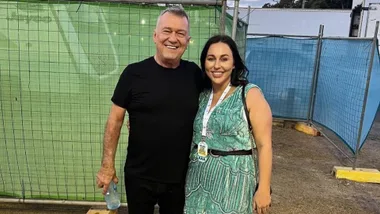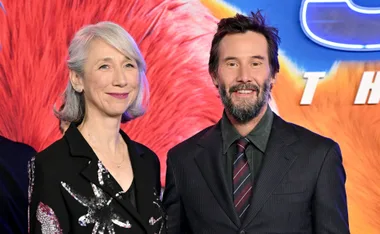She’s faced bullets and bazookas, and told it like it is in conflicts around the globe. Now, Kate Adie, BBC journalist and possibly the world’s most famous female war correspondent, has written a new book, From Corsets to Camouflage, a history of women in war. We have been warned more than once. Kate Adie is not easy. She does not suffer fools and their stupid questions. At all. Many a stern figure has been dismissed with a withering glance. Politicians and generals have melted into nervous puddles in the face of her questions, thrown by those precise vowels and that machine-gun intonation.
Tough and relentless are two of the mildest adjectives used to describe Kate Adie, 58, veteran war correspondent. There is even the standing cartoonists’ sketch, dusted off every time war threatens anywhere in the world. “We can’t start yet,” says a hapless soldier, “Kate Adie hasn’t arrived.”
So is this really her? This smiling, charming woman who jokes and laughs with a wonderful, great guffaw which splits her handsome face in two, and who is dressed in a beguiling short skirt and high heels.
It turns out it is. It also turns out that the planet’s best-known female war correspondent regards a sense of humour as absolutely vital in the grim business of covering war.
“Believe me, a sense of humour is the only way to get through,” she says, sitting in a fashionable London restaurant.
“I had a colleague years and years ago whose sense of humour had been surgically removed and I began to think this man just will not survive. We were in Northern Ireland at the time, covering the hunger strikes in the ’80s, and there were the worst jokes I have ever heard. But it’s the only way. When you’re sitting out in the mud outside a prison for six hours a day, you have to have a laugh.”
Kate Adie has covered most of the major international crises of the past two decades: the 1980 Libyan embassy siege in London; the 1982 Falklands War; the bombing of Libya in 1986; the massacre in Tianamen Square, Beijing, in 1989; the 1991 Gulf War; and the Balkans War of the 1990s.
Her coverage of the Tiananmen Square massacre was unforgettable. She stepped up to the camera as students and workers were being shot behind and around her. The sky was alight with gunfire, yet she calmly delivered her report, incisive and accurate to the last.
So was that the scariest time? “I don’t have scary,” she replies, looking steely for the first time. “Purely because there are different sorts of scary. That was random firing, although we knew by the middle of the night that they were trying to target foreign journalists. There are other sorts of scary … like you’re going somewhere in Afghanistan and there could be a minefield. And another sort, where you’re actually stuck with a loony with a gun.”
Clearly, however, no scary moment was bad enough to prevent her from sallying forth to yet another life-threatening war zone.
“Well, I don’t think you should do the job unless you want to. You’ve got to be totally focused, because someone might be coming at you with a brick.”
She joined BBC TV News in London in 1979, at the age of 34. Although she covered some overseas stories, she also had two years in the early 1980s as the BBC’s royal correspondent. Not surprisingly, civic receptions and spats among members of the House of Windsor were not for her.
In early 2003, Kate announced she was leaving front-line reporting and her job as chief news correspondent to concentrate on freelance work for the BBC. She presents a weekly radio program, From Our Own Correspondent, and does a lot of charity work, mainly for breast cancer.
Her latest book, From Corsets to Camouflage , is a pithy and often-humorous history of women in uniform – in conflict and civilian roles, from nursing to the armed services – throughout the 20th century.
It is not a feminist tract, but there is little doubt she feels great empathy with her subjects and the freedom they found when they dispensed with their frocks and dressed up as men to go to war.
“So I find women are often, literally, a footnote and I thought it was time to dig them out. Not to give them a more prominent role than is realistic, but to tell some extraordinarily good tales.”
What Kate discovered by delving through archives was a host of good stories about both ordinary and famous women who did extraordinary things during wars: they were brave, stoic and resourceful.
“I did like that, going around to all those reunions and seeing the old ladies. The thing you noticed about them was that they were so full of life when they remembered those days. Because they were free in that time of war, they were out of their skirts and they could do as they wished – and not be judged just as women.”











